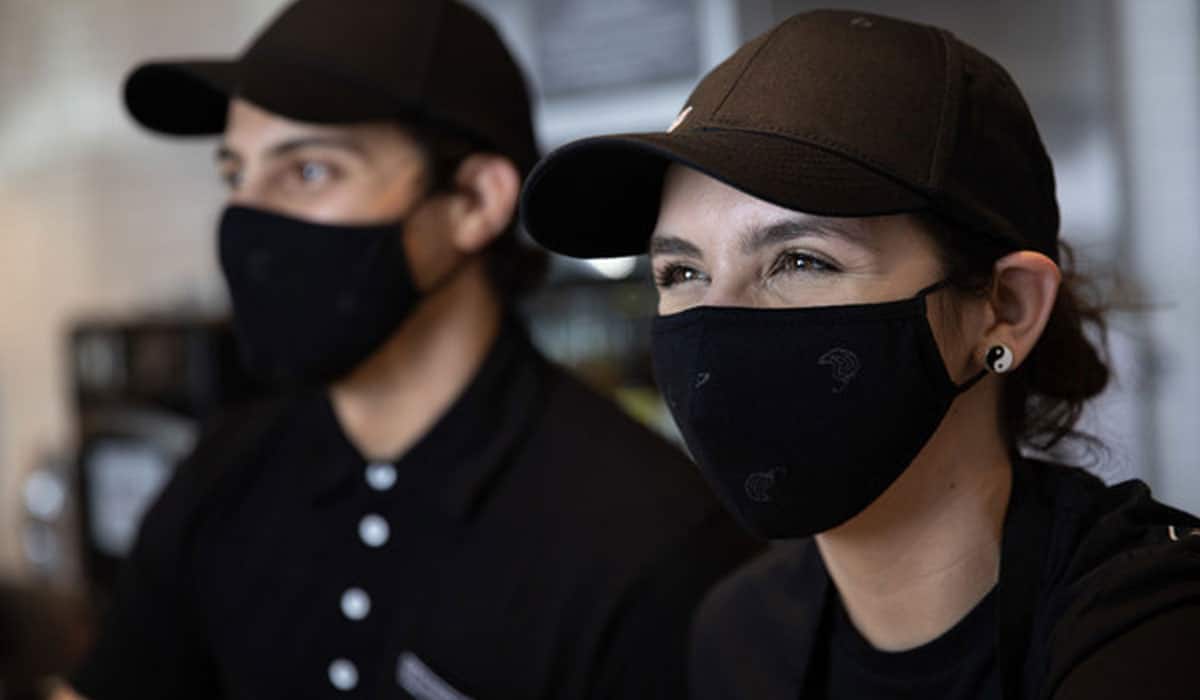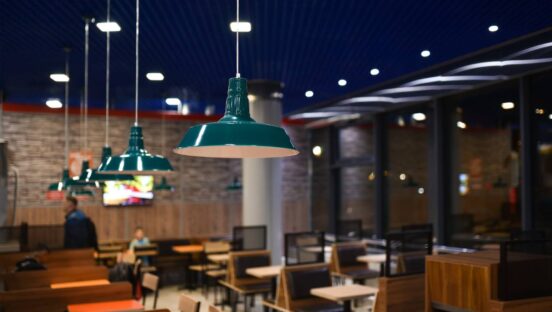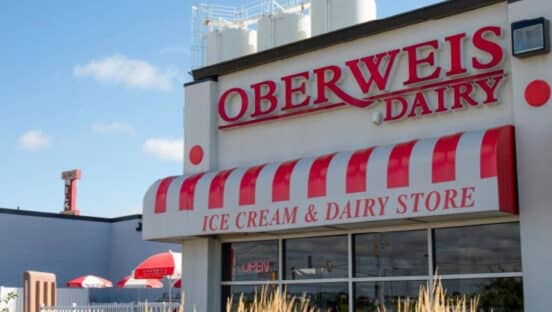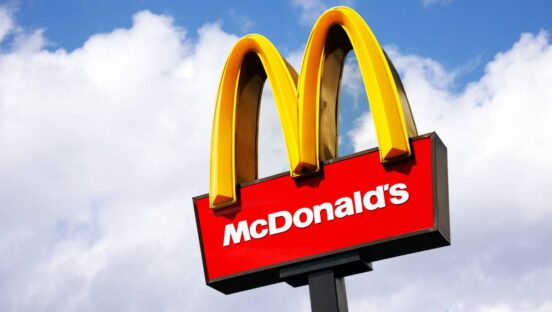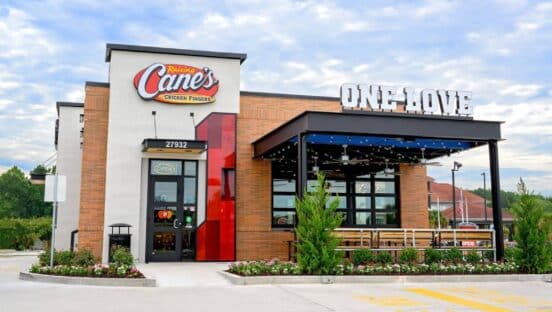The summer rush is knocking. Restaurants posted their 12th consecutive week of positive same-store sales growth in the period ending June 6, according to Black Box Intelligence. Although it represented a drop from last week, the fact remains the industry is swinging upward after a nightmarish run. Forty-two states posted positive sales growth during the week. And that should only hike as lagging markets, like New York City and Michigan, lift restrictions.
Recent data from the Census Bureau’s retail sales report indicated consumer spending on food service jumped 70 percent year-over-year. New research from Freshworks found 30 percent of Americans plan to splurge on dining out, ahead of travel, shopping, and concerts.
A broader, yet category-specific view: In May 2021, total U.S. fast-casual chain customer transactions increased by 2 percent compared to May 2019, and customer transactions lifted over May 2019 numbers in 30 of the top 50 markets, The NPD Group reported. Total U.S. restaurant chain customer transactions across all segments declined just 9 percent in May 2021 versus May 2019.
While this welcomed narrative has become prevalent in recent weeks, so has the biggest hurdle keeping restaurants from cashing in—labor. Hiring in a tight market is always complex, as restaurants well knew before COVID, yet this is no ordinary tight labor market.
“We kind of joke that the guests have outnumbered us,” Black Bear Diner CEO Anita Adams told FSR.
READ MORE:
Will the End of Expanded Unemployment Really Fix the Hiring Crisis?
Inside the Restaurant Industry’s Critical Labor Shortage
Employee Engagement and Retention Will Win the Restaurant Future
Snagajob, a platform dedicated for hourly work, released its 2021 Summer Hiring Report. The goal being to provide perspective and data during what’s typically one of the busiest hiring seasons of the year for cyclical sectors. Restaurants chief among them.
While many credit extended unemployment benefits for disincentivizing workers from coming back, it doesn’t tell the full story, Snagajob said. Family obligations. Burnout from long-term unemployment. Lingering health concerns. Waiting for more people to be vaccinated. The countless people who asked themselves during quarantine, “do I really want to do this for a living?” All these points factor in. And here’s what hourly employees themselves think.
Why are hourly workers not actively looking for work? (percentage of unemployment not seeking employment)
- Want to work but unable due to family obligations (like taking care of children) or schedule: 38 percent
- Burn out from long-term unemployment: 33 percent
- Want to work but waiting for more people to be vaccinated: 16 percent
- No jobs that fill my skill set: 12 percent
- Waiting for unemployment benefits to expire: 4 percent
What’s interesting is how this reverses from consumer and operator perception. Black Box, in April, asked 360-plus restaurant leaders what was driving the labor shortage. Fifty-seven percent tapped “higher pay through unemployment.” Datassential asked the same of consumers in a recent dive. Fifty-two percent blamed, “enhanced unemployment benefits create a disincentive to work,” while 39 percent picked “wages in foodservice are not high enough to attract employees.”
What Snagajob’s data could suggest is that people are starting to think beyond the COVID scenery. As employees reenter the workforce, they’re seeking opportunities that will match their lifestyles and plans, now and into the future.
For employers, the company said, it’s time to rethink hiring practices to better attract these post-pandemic workers.
And here’s how to begin doing so.
Let’s start with the current state of the hourly market. There are several essential factors:
- The economy is in the midst of a massive rebound as certain industries—namely hospitality—skyrocket in demand.
- This increase in demand presents several opportunities for both prospective workers and employers.
- Workers are shifting industries during the pandemic to pay the bills and get access to healthcare.
- Employers are facing demands to increase pay and expand benefits.
Yes, there is a labor shortage. Job vacancies are up 68 percent while job seekers remain flat versus pre-virus levels. In turn, it’s fair to call this the most competitive hourly labor market in a generation, Snagajob said. And it will remain hot until August or September, the platform predicted, when the hourly workforce should regain greater equilibrium.
What are employers doing to stand out?
- Provide flexible work hours and scheduling: 89 percent
- Offer workplace discounts: 76 percent
- Provide professional development and training opportunities: 54 percent
- Provide health insurance: 48 percent
- Offer paid vacation: 45 percent
- Offer bonus opportunities: 44 percent
There is one interesting development that could play in restaurants’ favor. Snagajob said teenagers are reentering the job market—up 35 percent, year-over-year.
It’s due to a few dynamics. One, available vaccines are causing parents to become more comfortable with teens going to work. Also, unlike adults, teens aren’t eligible for unemployment benefits (this is a key point). Lastly, there are six times more college deferments than the year before.
It’s difficult to guess if this is a flashing or lasting trend. But it unquestionably should be on operators’ radars.
Before COVID, the shift in workplace demographics was stirring significant issues. Chipotle chief restaurant officer referred to it as a “talent crisis” back in summer 2019. Data showed teenagers weren’t flocking to work as they did in past generations. College was quickly becoming more of a necessary and natural step than a privileged one. And this fostered a force of employees with degrees seeking employment beyond entry level from the moment they walked off the stage.
Headed into the turn of the century, the number of restaurant employees between the ages of 16 and 19 years old ticked up to pre-2007 levels, right before the financial crisis, per CNBC. However, the labor force participation rate of teens stagnated since 2016. Restaurants pulled from other industries, like retail, which was plagued by closures over the past decade. The BLS found 1.7 million teens worked in restaurants in 2018—the same number as 2007. Meanwhile, in that decade stretch, the number of restaurants jumped close to 16 percent.
From 2010–2017, restaurants accounted for one out of every seven new jobs, according to The Wall Street Journal.
Additionally, 41.3 percent of teens held a job in 2007. In 2018, it was 35.1 percent.
The BLS estimated the number of teenagers in the labor force would drop by 600,000 during a decade-long span ending in 2026.
According to the National Restaurant Association, teens once outnumber adults aged 55 years or older in the industry 3 to 1. It slid to 2 to 1. And that older demographic rose by 70 percent between 2007–2018.
But this was all before a global pandemic. Accelerate to the present and here’s what we’re looking at, per the BLS:
Seventy-five percent of the restaurant workforce in 2020 was Gen Z or millennials. Of the 6.55 million workers employed in food preparation or service at the end of the year, 39.4 percent were Gen Z, 35.6 millennials, 11.6 percent Gen X, and 13.4 percent Boomers.
Specifically, of the 655,000 quick-service workers, 65 percent were under the age of 25.
Fast-food and counter-service workers breakdown:
- 65 percent: Gen Z
- 22 percent: Millennials
- 6 percent: Gen X
- 7 percent: Boomers
The Black Box webinar mentioned earlier also asked operators what recruiting sources for hourly employees have returned the best results in 2021 so far:
- Walk-ins: 5 percent
- Company website/job bards: 32 percent
- Employee referrals: 49 percent
- Social media: 11 percent
- Other: 3 percent
If you piece together the data, it lends credence to the notion a good employee is a restaurant’s best resource to recruiting another. Especially among younger workers. And so the emphasis on workplace factors beyond just pay, from recognition to culture to engagement, takes on even greater meaning with a fresh generation that searches for their herd in today’s open media and social world. It’s never been easier to find your people and to align yourself with brands that reflect your value system. And that’s something restaurants need to be cognizant of when recruiting.
[image source_ID=”127780″]
According to a recent Bank of America report, American workers making $32,000 or less annually are better-served by unemployment.
Still searching, worker insights
Snagajob found job seeker growth to be most pronounced in states that plan to end unemployment benefits early. Hard to find a more concrete point than that one.
After a sharp drop in March and early April, that platform said it’s seen a visible recovery in job searches. And it’s accelerated in states that expect to cut the extra $300 off in June. On May 4, Montana became the first state to announce a preemptive end to expanded unemployment. Since, 24 other states have expressed intent to do so, including Texas, Florida, Georgia, and Ohio.
Hourly job search growth (May 1–May 15)
- States ending benefits: 21 percent
- U.S. overall: 16 percent
- States keeping benefits: 13 percent
The pandemic changed how people want to work and what they expect from their employer. Just look at recent wage boosts and benefits forked up by some of fast-food’s biggest players.
A horde of hospitality workers left the industry during 2020, whether they chose to actively or not, in the face of dine-in closures and mass furloughs. So, restaurants now has to compete with the wages and benefits offered by other industries in addition to competitors. More than ever.
You could say it’s a worker’s market. Hourly employees can find new, probably higher paying, positions that fit their lifestyle better.
But by late summer, Snagajob believes the market will be far more competitive. So it’s a good time for people to apply and feel more empowered to ask for what they really need in life. Thus, restaurants have to be ready to offer more.
This is what businesses are saying about their summer hiring plans, per Snagajob:
- Eighty-eight percent who hire teens for the summer told the platform they plan to do so again this year.
- While many businesses typically fill their positions by April and May, hiring is delayed this season as COVID vaccinations continue and consumer interest rebounds.
Snagajob said it expects most jobs will be filled by early July. Many businesses are now in a full hiring swing—in a recent survey, 99 percent of employers reported they are currently hiring.
In the same survey, 92 percent of employers said they do not have the staff they need to operate at full capacity. Ninety percent shared that they are not receiving enough applications.
From the employer perspective
Put simply, the challenge facing restaurants today is to find qualified workers to meet elevated demand. As noted, the reasons workers aren’t reentering the workforce, however, is pretty gray. State and federal unemployment benefits, undeniably, represent a lead factor for lower-skilled workers. According to a recent Bank of America report, American workers making $32,000 or less annually are better-served by unemployment. And this only levels up when you toss in childcare costs.
The lists of states opting out of federal pandemic-era jobless programs continues to grow and hit 25 states by the end of May. Some announced one-time bonus payouts as further incentive. Montana and Oklahoma, for instance, offered $1,200. Arizona $2,000.
The average American received $387 from their state in weekly unemployment payments. Tack on the expanded boost and it’s close to $700 ($687, to be exact). That means, for a 40-hour workweek, the average unemployed American is getting the equivalent of $17.17 an hour. Or, more than two times the federal minimum wage.
It was inevitable this was going to stretch the dynamic to its snapping point.
In states that announced they will stop federal unemployment benefits in June (referenced earlier), Snagajob witnessed twice the growth in job seekers (13 percent since the beginning of May versus 8 percent for the rest of the country). Based on last year, the company predicts those growth rates to accelerate next month as the country gets close to benefits falling off.
Still, after a 22 percent drop in March, Snagajob said there’s been a rebound in the number of hourly job seekers. Since early April, it’s seen a surge with the number rising 9 percent in the first two weeks of May. About 50 percent of that growth is due to demand for summer employment, the company said, while the other percentage represents an elastic turnaround.
Even with a summer seasons on deck, though, this is still a worker shortage reality.
Navigating the waters starts with understanding what today’s workers want, what attracts them, and what will make the difference when hiring and retaining employees.
From Snagajob:
In the past month:
- 75 percent of workers surveyed have applied to a job
- A third of workers have interviewed for a job
Not just the unemployed are looking for work.
Employed workers are weighting their options:
- Two-thirds have applied to a job in the last month
- A third have interviewed in the last month
They are job searching for these reasons:
- 34 percent: Working overtime because their employer is short staffed
- 50 percent: Because they’re taking on extra responsibilities
Health and safety remain top-of-mind for many hourly job seekers.
There are five top elements prospective employees saying they look for in a job description:
- 84 percent: Wage rate
- 77 percent: Flexible scheduling
- 58 percent: Benefits offered
- 57 percent: Health and safety precautions
- 50 percent: Interview format (in-person versus video)
Top searches among people looking for jobs:
- Summer jobs near me
- Summer jobs for college students
- Summer jobs for teens
- Summer jobs for teachers
Employers should make sure they include their zip code and mention they’re open to hiring these types of applicants, Snagajob said.
Speaking of job listings, here are some tips. And something to be mindful of—80 percent of job seekers said they plan to wear a mask even if not required when working. It’s on employers to reassure applicants they’re doing everything to keep them safe, from PPE to sanitization to contactless services and social distancing.
Implement referrals
- Why: Referrals result in 5X the hire rate of other applicants
- What to do: Raise referral bonuses, run monthly campaigns, ensure signage in breakroom
List your wages
- Why: Postings with wages get 30 percent more applicants
- What to do: List the wage or wage range for each position
Reinforce differentiators
- Why: Highlight what others and gig employment can’t offer
- What to do: Ensure job descriptions speak to career growth, family atmosphere, benefits
Address health/safety concerns
- Why: 52 percent of prospective employees look for these elements in job postings
- What to do: List COVID-19 health and safety measures in place
The white-collarization of hourly worker
With greater financial leeway, Snagajob said, hourly workers are reevaluating what they desire. As in white collar, employers continue to augment wages and benefits, but also introduce training and development programs to attract talent. McDonald’s and Chipotle recently raised wages (McDonald’s at the corporate level). While Chipotle now offers debt-free degrees across a variety of subjects, including culinary, and recently said hourly workers have an opportunity to advance to a “Restaurateur,” a six-figure general manager position, in just three and a half years. The brand also rolled out a $200 employee referral bonus for crew members and a $750 referral bonus for apprentices or general managers.
“The current labor shortage is a significant challenge that is having a very real impact on business,” Snagajob said. “But despite that, jobless claims are at a new pandemic low, continuing their downward trend and showing that the labor market is gaining strength as COVID-19 cases steadily decrease and over 50 percent of Americans have received at least one dose of the vaccine. Consumer confidence has also increased, with 52 percent saying they are more comfortable making major household purchases [homes, cars, etc.] and 57 percent are more comfortable with discretionary purchases than they were six months ago.”

